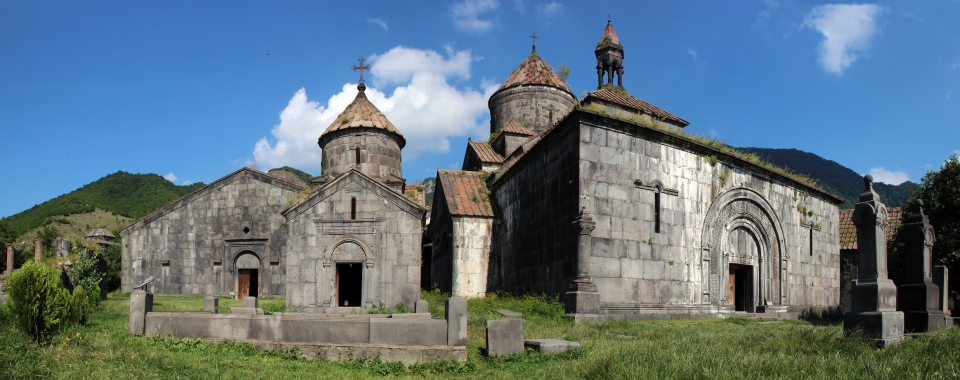
Armenian Lab
The Armenian Lab is a collaborative research space dedicated to the archaeology and early history of Armenia. The lab is directed by Kristine Martirosyan-Olshansky, who has been conducting field research in Armenia since 2008 with a focus on the early agricultural communities of the region. She is currently co-directing the excavations of the Masis Blur Neolithic settlement, an 8000-year-old agro-pastoral village located in the Ararat Plain. The project investigates the adaption of farming, exploitation of natural resources, and socio-economic connections in the region during the 6th and 5th millennium BCE through the analysis of the artifacts left behind by the inhabitants of the Masis Blur settlement. Dr. Martirosyan-Olshansky uses geochemical methods for sourcing and provenience research of obsidian tools to investigate resource acquisition, utilization, and exchange by the first farmers of the Ararat Plain.
Photo by Alex Olshansky
Undergraduate and graduate students, as well as community members are encouraged to utilize the resources available at the Armenian Lab and consult with Dr. Martirosyan-Olshansky on research questions and interests as they pertain to the research foci of the program. The research program for Armenian archaeology, established by Zaruhy Sara Chitjian in 2012, is also home to the Hampartzoum and Ovsanna Chitjian Collection and Archives.
The lab welcomes students, volunteers, and all interested in the archaeology and history of the region. To visit the lab and for volunteer opportunities contact Dr. Martirosyan-Olshansky.
Current Research Projects
Early Framing Communities in the Ararat Plain (Armenia) - Masis Blur Archaeological Project
Research at the Masis Blur Neolithic settlement (ca. 6200 BC – 5200 BCE) has been focused on the adaption and spread of farming in Armenia and the Southern Caucasus. Masis Blur contains some of the earliest evidence of farming lifeways in the region and it has the potential to elucidate how and why people engaged in farming as a new way of subsistence and social organization. In the Southern Caucasus, the project is also the first to place emphasis on large-scale horizontal excavations of a Neolithic settlement, which will provide us with a better understanding of settlement layout and how various activity spaces connected to one another. This, in turn, can help us understand the social organization of the community. The laboratory currently houses hundreds of lithic tools, samples of minerals, pigments, and charcoal from Masis Blur, as well as a very extensive geological obsidian collection from the Southern Caucasus. There are numerous ways in which one can engage with this material, including applying various methods of analysis (typological, technological, characterization, use-wear, etc.) and documentation (cataloging, photography, photogrammetry, illustrations, etc.). The project accepts field school students and volunteer participants.
Bronze Age Burial Practices in Armenia – The Karashamb Necropolis
The necropolis of Karashamb, located about 1.5 km south of Karashamb village, on the right bank of the Hrazdan Gorge, is a vast burial site which was in use from the Middle Bronze Age through the Iron Age (ca. 2400 BCE – 500 BCE). The site has been excavated intermittently since the mid-1960s, as a result, some 1060 tombs were excavated between 1981 and 1984 and another 500 or so between 2009 and 2015. The analysis of the materials from the rich kurgan (mound) burials point to the emergence of social hierarchies during the early phases of the MBA and the rise of state-level political entities in the Southern Caucasus sometime in the second half of the 2nd millennium BCE. The laboratory is involved in the creation of a database for the cataloging of finds from the Karashamb Necropolis. Dr. Martirosyan-Olshansky is conducting sourcing research on the obsidian arrowheads from the site. There are a number of research and volunteer opportunities, interested students and community members are encouraged to contact Dr. Martirosyan-Olshansky.

Photo by Kristine Martirosyan-Olshansky


